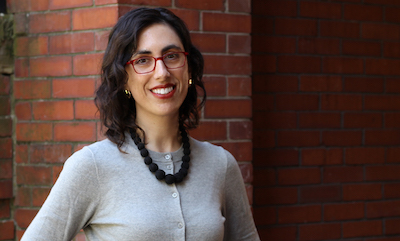Gathering Data on College Student Mental Health, and Putting It to Use.
 Sarah Lipson describes the second year that she was a residence advisor at an Ivy League school as “the perfect storm.” Lipson dealt with several serious situations involving students’ mental health, and had a number of students who had to take a leave from the university due to mental health problems. Lipson became part of the college’s mental health task force, but was struck by how disconnected the proposed strategies seemed from what her group of students was actually going through.
Sarah Lipson describes the second year that she was a residence advisor at an Ivy League school as “the perfect storm.” Lipson dealt with several serious situations involving students’ mental health, and had a number of students who had to take a leave from the university due to mental health problems. Lipson became part of the college’s mental health task force, but was struck by how disconnected the proposed strategies seemed from what her group of students was actually going through.
Her experience as an RA led Lipson, now an assistant professor of health law, policy & management, to a career studying the mental health of college and university students. She now coleads the The Healthy Minds Study, the most comprehensive national survey focused on mental health in college student populations. The annual, web-based study has been fielded at more than 300 colleges and universities, with more than 300,000 student respondents to date.
But collecting data is not enough: “The entire mission is translating data into practice,” Lipson says.
To do that, Lipson and her colleagues in the Healthy Minds Network for Research on Adolescent and Young Adult Mental Health (HMN) make their (de-identified) data publicly available, and create tools that campus practitioners, policymakers, advocacy organizations, and student groups can use to make changes at the campus level.
With HMN’s data visualization tool, these groups can generate graphs showing the relationships between a range of mental health concerns, behaviors, and demographics, nationally or on their campus. For school administrators wary of the cost of creating a counseling center or adding another behavioral health provider, they recently released an “economic case” calculator showing how campus mental health services pay for themselves in students (and tuition) retained, while increasing the lifetime earnings of alums. Lipson and her colleagues also run workshops to help students learn to present these data and make evidence-informed cases more effectively.
在
(Read more about Lipson’s recent study on racial/ethnic disparities in student mental health treatment here.)
“Numbers are powerful,” Lipson says. But, before the Healthy Minds Study, there wasn’t much data on the subject. “Today there’s a national dialogue about mental health on campus, but when I started in this area of research, about 10 years ago, there was less attention to mental health on campuses in the media and in research, and this was apparent in the lack of data,” she says. “I was searching for data that I assumed existed. I thought, Surely there’s national data about the population-level prevalence of mental health on college campuses—but there was very little.”
She decided to try implementing a campus survey, focused primarily on eating disorders, at the University of Michigan, where she was pursuing her doctorate. (Lipson’s then-doctoral advisor, Daniel Eisenberg, is now the director of the HMN, with Lipson as associate director.) Soon other schools began reaching out, wanting to implement a similar survey on their own campuses. It is not a novel study design, Lipson says, just “a cross-sectional online survey, primarily of validated mental health screening tools.” But no one had done such a survey on an entire campus of students, much less nationally, before the Healthy Minds Study.
Thanks to the study, the population-level data that Lipson had been looking for are now available: 35 percent of students have at least one mental health issue, and under 40 percent of those with a mental health issue are receiving treatment. As the study has grown, Lipson and her colleagues have been able to go into much more detail, examining disparities across demographics, from race/ethnicity to income to gender, and college characteristics such as two-year versus four-year, more or less diverse, religious affiliation, and location. Forthcoming research examines other disparities, such as for sexual and gender minorities, and for intersectional identities.
“Right now, it’s in terms of disparities,” Lipson says, “but the goal, what we’re really working for, is equity.”
Watch Sarah Lipson’s Population Health Exchange (PHX) webinar on student mental health stigma here.